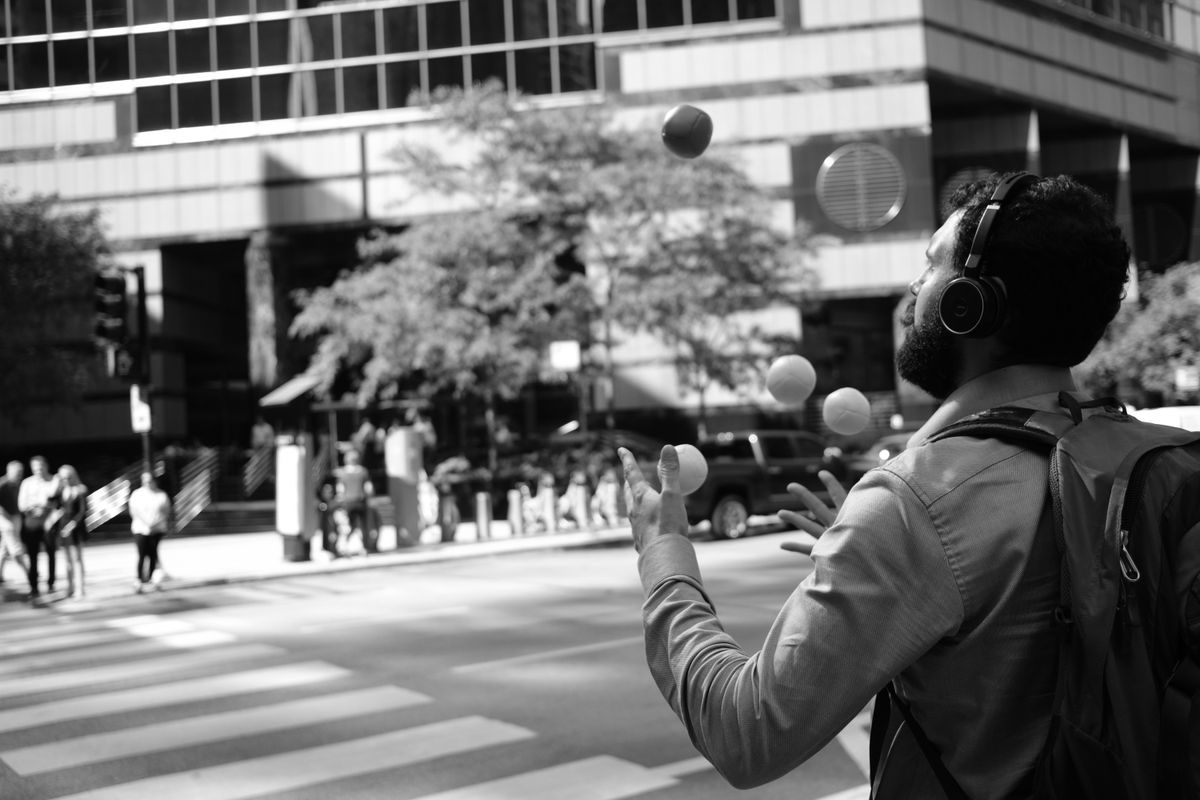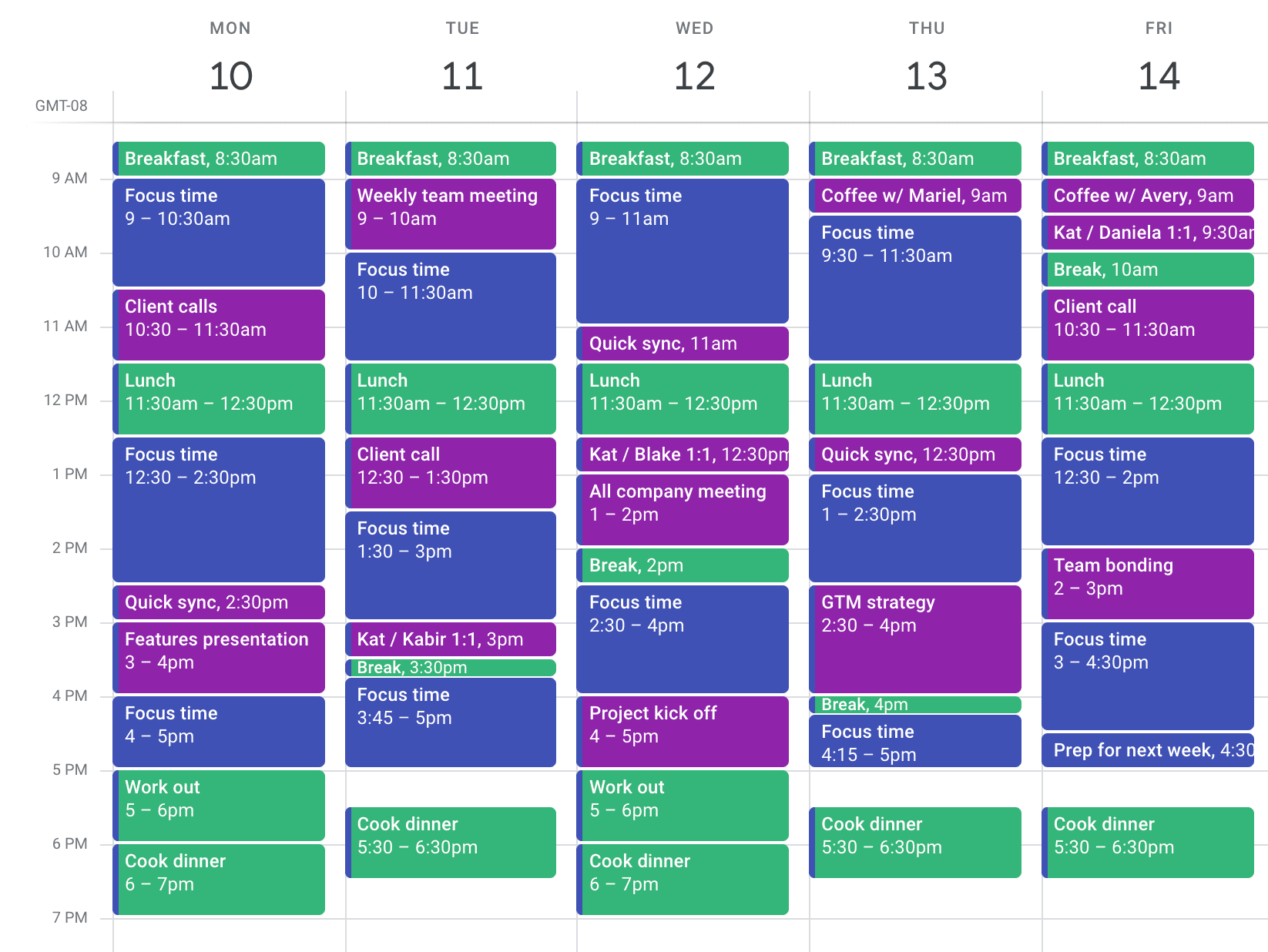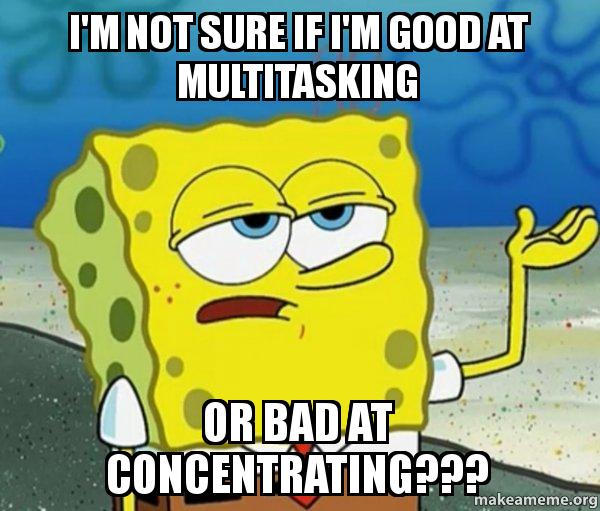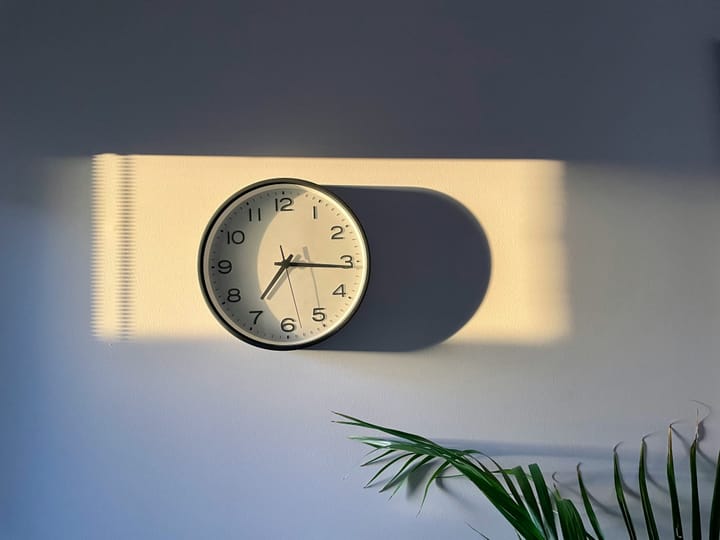Why Multitasking Is Unproductive and What To Do Instead
Learn why multitasking is unproductive and 3 strategies to improve your productivity and quality of work.

How many times in your career have you seen (or written yourself) “Good at multitasking” on a resume or job description? With the ever-increasing demands on our time and attention, multitasking is touted as a desirable, even required, skill set. For many roles, multitasking is built into how we expect to work.
But what even is "multitasking”? Oxford Languages defines multitasking as: “the performance of more than one task at the same time”.
In theory, multitasking seems like a great way to get things done. The argument is that multitasking saves time, money, and increases productivity. By doing more than one thing at a time, you will do more in a shorter amount of time. Sounds reasonable.
Unfortunately, the reality is that multitasking has a negative impact on both our productivity and quality of work. Instead of getting lots done because we are doing many things at the same time, we tend to get less done and do a worse job on each subsequent task.
Why does multitasking negatively impact productivity?
Dr. Sophie Leroy coined the term attention residue to describe what happens when we switch tasks. Her research showed that “our brains find it difficult to switch attention between tasks; more often than not, part of our attention stays focused on the interrupted task and does not fully switch to the interrupting demand.”
What this means is: “when you experience attention residue and keep thinking about Task A while working on Task B, you have fewer cognitive resources available to perform Task B. The impact? Your performance on Task B is likely to suffer, especially if Task B is cognitively demanding."
It turns out that the benefits of multitasking (saving time, money, and increasing productivity) are a myth.
We only have a certain amount of attention and cognitive capacity each day. It is a depletable, finite resource. Every time you switch between tasks you are spending that cognitive resource without regard for its limits.
This is fascinating because multitasking is such a prevalent practice in our workplaces and even homes, but our brains are better suited to focusing on one thing at a time.

Why does multitasking negatively impact the quality of work?
Multitasking will also have a negative impact on the quality of work you do. A nugget from Cal Newport’s book, Deep Work: Rules for Focused Success in a Distracted World is what he calls the Deep Work Equation:
High-quality work produced = (time spent) x (intensity of focus)
This is another way of thinking about multitasking: the more you are distracted and interrupted, the longer your task will take or the worse quality you will be able to produce.
In his book, Cal defines deep work as: “the ability to focus without distraction on a cognitively demanding task”. Your ability to focus depends on your cognitive capacity. Your cognitive capacity depends on spending your mental energy sparingly.
What to do instead of Multitasking: Unitasking
Unitasking is simply working on a single thing at a time. In an ideal world, when you uni-task you are able to focus on a single task at a time without interruption or distraction. You engage in productive deep work to produce high-quality work.
Sounds kind of nice, doesn’t it?

Now many of you are wondering: what planet do I live on where there aren’t a ton of distractions and task jumping in my day-to-day? Don’t worry! I realize that it’s impossible to have an entire interruption-free day. Multitasking is not going anywhere.
But we can make choices to reduce distractions and optimize our ability to focus!
We can’t prevent every attention shift and multitasking is a necessary part of many of our roles. Multitasking isn’t even always bad. It’s just not the productivity-increasing time-saver we have all thought it to be. Instead, it is a skill that we can use for certain types of tasks that don’t need a lot of focus or are not mentally demanding.
There are things we can do to shift the way we approach our work to reduce the amount of time we spend multitasking and increase the amount of time uni-tasking.
These are strategies for you to try:
- Time block tasks
- The “Ready-to-Resume Plan”
- The Ivy Lee Method
1. Time block tasks
If you are a regular reader, you know that I love time blocking. I even wrote a recent article on just that: Time-Blocking and Imagining Your Ideal Week.
Time-blocking is slotting tasks into specific time blocks in your daily schedule or calendar. Time blocking is my go-to planning method of choice and the one I teach most often in my business coaching practice.
Time blocking is a way of setting yourself to uni-task over certain blocks of time. It’s setting the intention that you will focus on a single task.
The things I appreciate most about time-blocking are:
- A visual map of your commitments. Calendar time blocking is a visual way of mapping out your day week. You can look at when you intend to do your tasks in relation to your other daily and weekly commitments.
- Requires time-estimates. You have to estimate an amount of time for how long you think it will take to complete a task, which requires a greater depth of thinking than a list. When you slot it into the calendar, you have to think about where it fits best, given how long you think it will take.
- Sets more reasonable expectations. When you actually have to map out your tasks and estimate how long they will take, it’s harder to think you are going to cross off 15 items on your to-do list. Instead, you set more reasonable mental expectations for what is achievable in a day or week.
- Reduces overbooking. When you have laid out your tasks for the next few days and get a meeting request during one of your time slots, you have to think twice about your priorities. You have to decide if the meeting is more important than the task you wanted to work on during that same time slot.
I prefer to use a digital calendar (Google Calendar in my case) because I can easily move tasks around as my commitments change. I have also had coaching clients that prefer a physical calendar. They say it feels like once they have written a task in and scheduled it, it is set in stone (so to speak). Either works great.
Time-blocking helps you set an intention and commit a task to a certain time frame, reducing the likelihood of jumping between multiple tasks and experiencing attention residue.

2. The “Ready-to-Resume Plan”
Dr. Leroy explains that the “Ready-to-resume plan” is when you “take a minute to note where you are on the interrupted task, Task A, and what you want to do and focus on upon return. Then you switch to Task B.”
When you are interrupted you:
- Stop.
- Write down what you were doing.
- Write down what you were going to do next.
- Give your full attention to the thing (or person) that interrupted you.
- And then come back!
It can be as simple as having a notebook or pad of paper on your desk or a Word/Google Doc/Notes document on your desktop. When something or someone interrupts you, take a moment to write down what you were doing and what you want to do next.
The Ready-to-Resume plan is just taking that extra step when you are interrupted to hold a place for your thoughts so that your brain doesn’t have to hang on to whatever you were doing. You are able to give the next thing your complete attention.
This reduces that mental load and lets you get back up to speed fast when you go back to the task you left. It reduces those moments where you stare into the abyss trying to remember what you were doing and where you were in the task.
The “Ready-to-Resume plan provides the brain the cognitive closure it needs to reduce attention residue so that we can be more present and perform at our full capacity.”
It’s fast (takes under a minute) and in Dr. Leroy’s studies, it was found to reduce attention residue significantly.
I don’t think it is practical in all situations but it is a tactic that you can bust out (when circumstances allow) to help reduce attention residue and get back on track quickly after an interruption.

3. The Ivy Lee Method
The Ivy Lee method is one I came across reading James Clear, author of Atomic Habits: An Easy & Proven Way to Build Good Habits & Break (I highly recommend the book if you haven’t read it). The gist, as per the Atomic Habits website, is:
- At the end of each workday, write down the six most important things you need to accomplish tomorrow. Do not write down more than six tasks.
- Prioritize those six items in order of their true importance.
- When you arrive tomorrow, concentrate only on the first task. Work until the first task is finished before moving on to the second task.
- Approach the rest of your list in the same fashion. At the end of the day, move any unfinished items to a new list of six tasks for the following day.
- Repeat this process every working day.
What I like about the Ivy Lee Method is that it:
- Reduces decision fatigue.
You don’t have to decide at the end of each task what the next one will be. You have already decided “what’s the next best thing” so there are fewer decision points in a day. - Uni-task.
You set the intention before you start that you will work on something until it is done. Ideally, this prevents you from bouncing around and experiencing attention residue. - Reduces procrastination.
If you mentally commit to working through a task until it is done, in a particular order, it’s harder to avoid a task you don’t want to do or stop working on it in favour of another. You just get it done!
The Ivy Lee Method gets you to make decisions on what you are going to work on ahead of time and allows for a rolling to-do list that you can adjust as new priorities pop up, instead of hopping around.
Use the Ivy Lee Method in conjunction with time-blocking to map your six tasks out for the next day and see what fits.
Other resources to help with focus
I have recently written a number of articles that centre around boundary setting and rituals which all have great tactics that will help you reduce distractions so you can stay focused and produce good work.
How to Use Ritual to Support Deep Work and Stay Focussed
7 Ways to Set Email Boundaries and Lift the Curse of Immediacy
8 Ways to Set Boundaries Around When You Schedule and Accept Meetings
7 Ways to Set Availability Boundaries and Reduce Interruptions
Summary
To summarize, multitasking = bad, unitasking = good! 😁
Understanding why multitasking reduces our productivity and quality of work is the first step in thinking about how we can reduce distractions and interruptions.
We have a lot more power over how we spend our attention and focus than we give ourselves credit for. Instead of wasting precious mental energy, having tasks take longer than they need to, and hurting the quality of the work we produce, we can take steps to reduce those distractions. Or at least set ourselves up to get back on task when we are interrupted!
Need help learning how to control your schedule and stop multitasking? Hire me for one on on coaching.
Share
Ashley Janssen

Productivity consultant, writer, speaker, serial entrepreneur, chaos calmer, introvert, cat-lady. Lover of books, fitness, old fashioned’s, basketball, and video games.
Follow me on
Twitter
or
LinkedIn.
Hire me for
1 on 1 productivity consulting
or
speaking.
Related articles

When You Do Things Matters

What If Being Lazy Was a Good Thing?


Comments ()